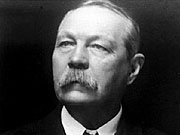Richard Lancelyn Green
From Plastic Tub
| Revision as of 04:47, 10 May 2005 Payne (Talk | contribs) ← Go to previous diff |
Revision as of 10:08, 10 May 2005 Adkins (Talk | contribs) sp Go to next diff → |
||
| Line 13: | Line 13: | ||
| :''Green's death stinks of [[The League of Gnomes|Gnomes]]; the stench cannot be denied. Anyone with a [[nose]] for crime could sniff it in a New York instant. This [[Counterfeiting gang|counterfeit]] story foisted upon the public has all the [[ear]]marks of a cover-up. Green expressed certain sentiments to me that in '''no way''' intimated a desire to die. I knew the man. He '''lived''' -- let me tell you... I used certain contacts to verify details he had about that "mysterious American." He was real. And that shit stinks.'' | :''Green's death stinks of [[The League of Gnomes|Gnomes]]; the stench cannot be denied. Anyone with a [[nose]] for crime could sniff it in a New York instant. This [[Counterfeiting gang|counterfeit]] story foisted upon the public has all the [[ear]]marks of a cover-up. Green expressed certain sentiments to me that in '''no way''' intimated a desire to die. I knew the man. He '''lived''' -- let me tell you... I used certain contacts to verify details he had about that "mysterious American." He was real. And that shit stinks.'' | ||
| - | (Carrington happened to come into contact with ''Gringotes'' while researching Holmes' violin -- which he believes is intended to have once belonged to Paolo Grignotti, a famous Italian master.) | + | (Carrington happened to come into contact with ''Grignotes'' while researching Holmes' violin -- which he believes Doyle intended to have once belonged to Paolo Grignotti, a famous Italian master.) |
| Less sentimental analysts have declared that Carrington is incorrect. They do not doubt the reality of a mysterious American, but they do believe the suicide was genuine. "It was the ultimate act of sacrifice to draw attention to some dark force gathering on the horizon," writes Winthrop Dunn in the popular [[Holmsiana]] magazine." | Less sentimental analysts have declared that Carrington is incorrect. They do not doubt the reality of a mysterious American, but they do believe the suicide was genuine. "It was the ultimate act of sacrifice to draw attention to some dark force gathering on the horizon," writes Winthrop Dunn in the popular [[Holmsiana]] magazine." | ||
Revision as of 10:08, 10 May 2005
|
Born 10 July 1953. Died 27 March 2004. Although renowned for his popular renditions of Homeric and Arthurian legends, Sherlock Holmes was Green's passion. A connoisseur of mystery in life, Green bloomed further mystery in death. After a flamboyant life, Green was found garroted in his bed; the cord had been tightened with a wooden spoon. Green had become increasingly paranoid in his last days, claiming he was being followed by a mysterious American. Although his death was later ruled a suicide, suspicions remain. Long-time correspondent Mazzistow Carrington, a detective novelist of rightful merit, has publicly expressed his doubts over the suicide story. In Grignotes 32 (2005) -- a journal normally dedicated to Paolo Grignotti -- he writes:
(Carrington happened to come into contact with Grignotes while researching Holmes' violin -- which he believes Doyle intended to have once belonged to Paolo Grignotti, a famous Italian master.) Less sentimental analysts have declared that Carrington is incorrect. They do not doubt the reality of a mysterious American, but they do believe the suicide was genuine. "It was the ultimate act of sacrifice to draw attention to some dark force gathering on the horizon," writes Winthrop Dunn in the popular Holmsiana magazine." A third interpretation has it that Green in fact had an extreme form of body image dysfunction which led him to amputate his entire body -- by killing himself. The spoon, they say, indicates his desire to shed this fat mortal coil, weighted down with eating and its accompanying farts; the spoon is the ultimate symbol of the bodily need which shackles the spirit. In an extreme form of Gnostic asceticism, Green made that ultimate transition. Plastic Tub sees an attractive merit in this last position, but ultimately believes one of the first two possibilities is likely. All evidence, to be presented as soon as it is properly compiled, will be presented herein. What is certain is that there was an American by the name of Stanley Adcock (generally referred to as "the mysterious American" by conspiracists) flew to England and stayed near Green's final apartment. While in London, Adcock is known to have made several telephone calls to known Gnomes. Soon after Green's death, Adcock returned to the States and thereafter retired to a life of relative seclusion in Coeur d'Alene, Idaho. According to unnameable sources of the Tub, Adcock is a violinist of international note; a firm believer in Kapitalist Darwinism; a charitable doner to the Leeks for Peeps, a proud member of the Society for the Terminally Obese Children Foundation; and the direct descendent of Pierre Charles L'Enfante, designer of the Washington D.C. cityscape. See Also |
DesiderataGreen also collected plaid pants; his collection numbered in the high hundreds. Green's myopic left eye led to innumerable automobile accidents, yet he refused to wear a monocle. |

